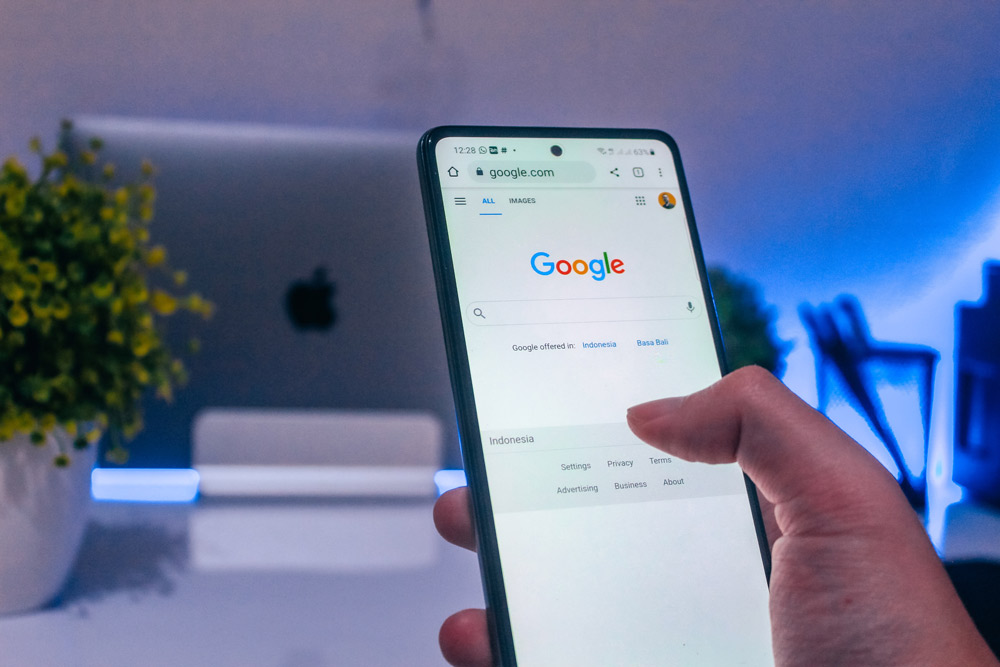TL;DR / Summary:
- Google employs human ‘Search Quality Raters’ to manually inspect and review examples of search results and web pages.
- This provides feedback to further train the ranking algorithms to become more accurate.
- They follow a detailed process, including assessing whether a user would have their search ‘needs’ met by the page and content they viewed.
- At a core level, the question is: did the user find the answer they were after or not?
Page-one rankings are the holy grail for any business, but how does Google decide who gets these coveted slices of internet real estate? We’ve heard SEO described as a ‘dark art’, but one of the biggest hidden secrets at Google is a crucial element often overlooked: the ‘Needs Met’ framework.
This 176-page compendium, last updated in December 2022, serves as the cornerstone of Google’s organic search rankings, lighting the path to coveted page-one rankings. Within its pages lies a wealth of wisdom that guides the discerning eye of Google’s Search Quality Raters, ensuring that the search results resonate with users on a deep level.
In 2022 Google ran almost 900,000 individual search quality tests with Raters worldwide. Their mission is to continuously test, improve and iterate their search algorithms.
So, how can you use these guidelines to benefit your own business?
User intent: The north star of search
At the heart of Google’s evaluation is the fundamental user intent concept. Recognising that users seek to ‘Know,’ ‘Do,’ ‘Website,’ or ‘Visit,’ Google distinguishes the diverse needs of its audience. Whether it’s procuring information, taking an action, navigating to a specific destination or visiting a physical location, each intent carries its own weight and significance.
- Know – Find Out Information. E.g., ‘How old is Keanu Reeves?’, ‘How tall is the Eiffel Tower?’, ‘What’s the weather in Melbourne today?’
- Do – Take an Action. E.g., ‘Pay electricity bill’, ‘Watch Harry Potter’, ‘Online personality test’.
- Website – Navigate to Somewhere. E.g., ‘Reddit login’, ‘News.com.au’, ‘NAB Business Account’
- Visit – In Person. E.g., ‘petrol station’, ‘NAB ATM locations’, ‘Dentist near me’.
Each of these needs is unique in its nature and the expected outcome..
Variance in intent: Accounting for individuality
Language is a living entity, shaped by unique experiences and perspectives. A search for ‘football’ in the UK evokes the game of Soccer, while in the US, it refers to Gridiron. ‘Apple’ may signify a tech giant or a humble fruit. As queries evolve, so does their meaning. ‘New iPhone’ in 2021 might have meant the iPhone 13, but today’s query is looking for information on the iPhone 15.
Google considers other signals — your location, search history, behaviour and frequently visited websites — to reflect the user intent best.
Assessing the journey: The ‘Needs Met’ spectrum
Within the Quality Rater Guidelines lies a spectrum of evaluation, ranging from ‘fully meets’ to ‘fails to meet’ the user’s needs. This nuanced assessment determines the efficacy of search results in delivering the sought-after answer. Through meticulous scrutiny, Search Quality Raters gauge the quality and relevance of each page and its content.

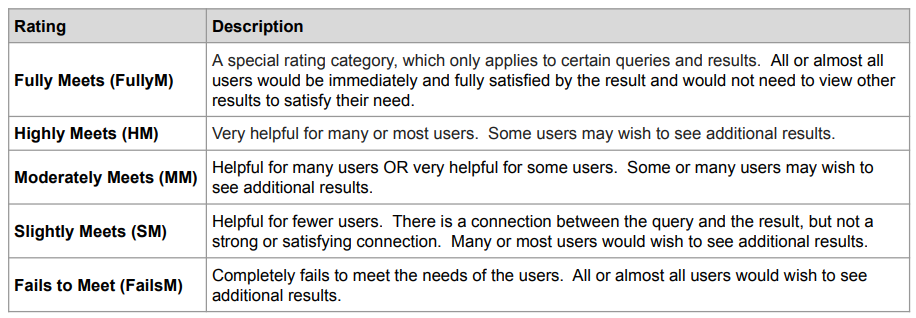
‘Fully Meets’ examples
The examples provided in Google’s documentation below demonstrate cases where the displayed result would completely fulfil the user’s intent based on their query, eliminating the need to return to any other search result after clicking through to this one.
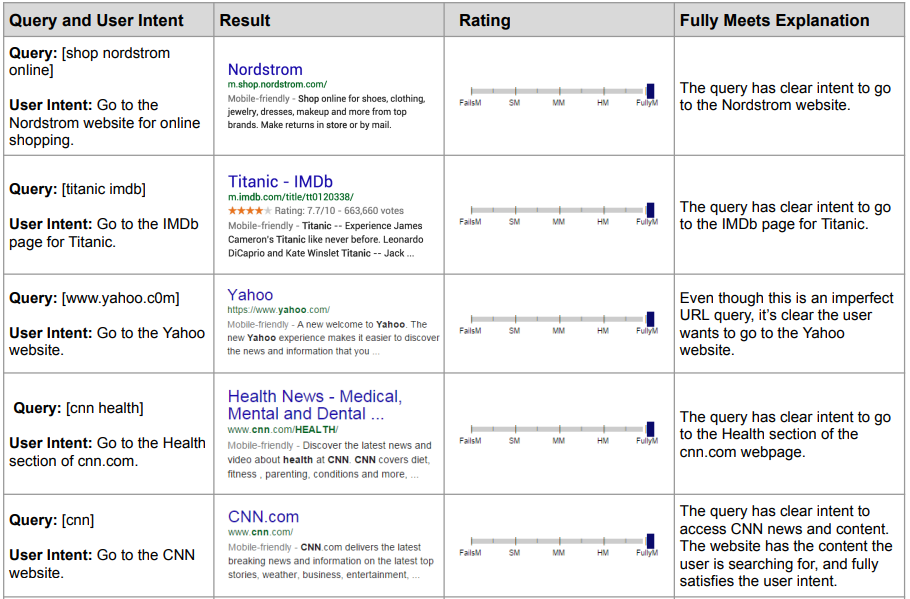
‘Highly Meets’ examples
The below examples demonstrate how search results can ‘highly meet’ the user’s intent based on their query. While there may be instances where a user is not completely satisfied with the result, such as when searching for ‘Michael Jordan’ and hoping to find highlight videos or playing statistics, most users will find helpful information and a resolution to their query from the selected listing.
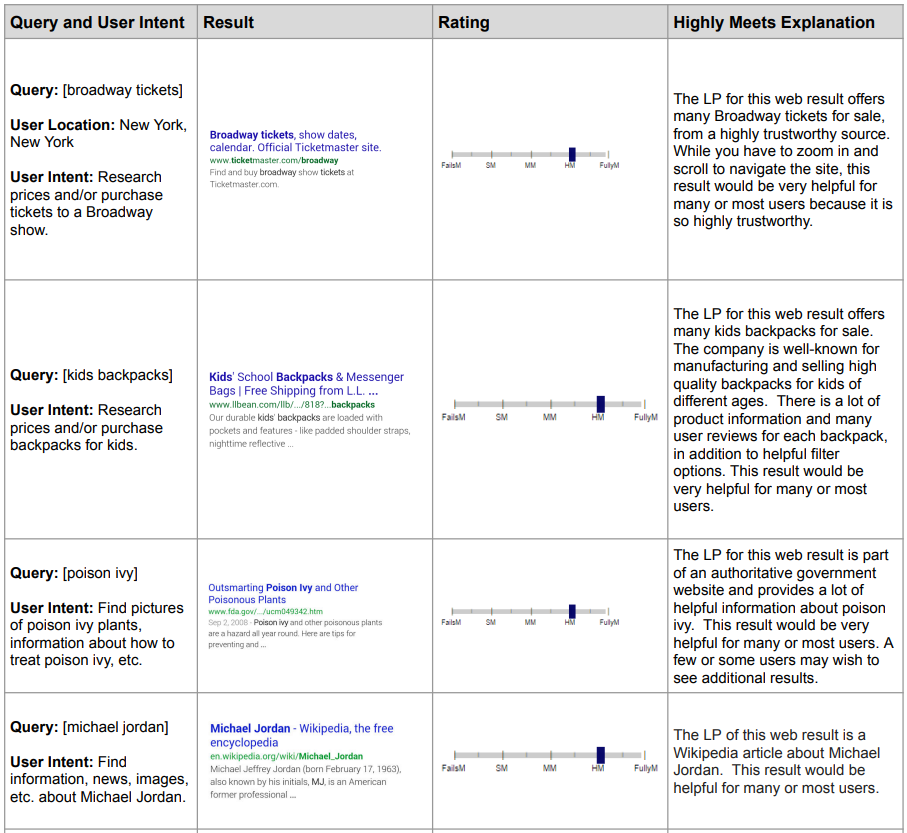
‘Moderately Meets’ examples
The examples below illustrate cases where search results only moderately satisfy the user’s query intent. We see that queries are becoming more general and could have multiple interpretations.
For instance, a search for ‘City of Angels’ could refer to the school in LA, the musical, or the movie, making it difficult to determine which website would ‘fully meet’ the intent of that query.
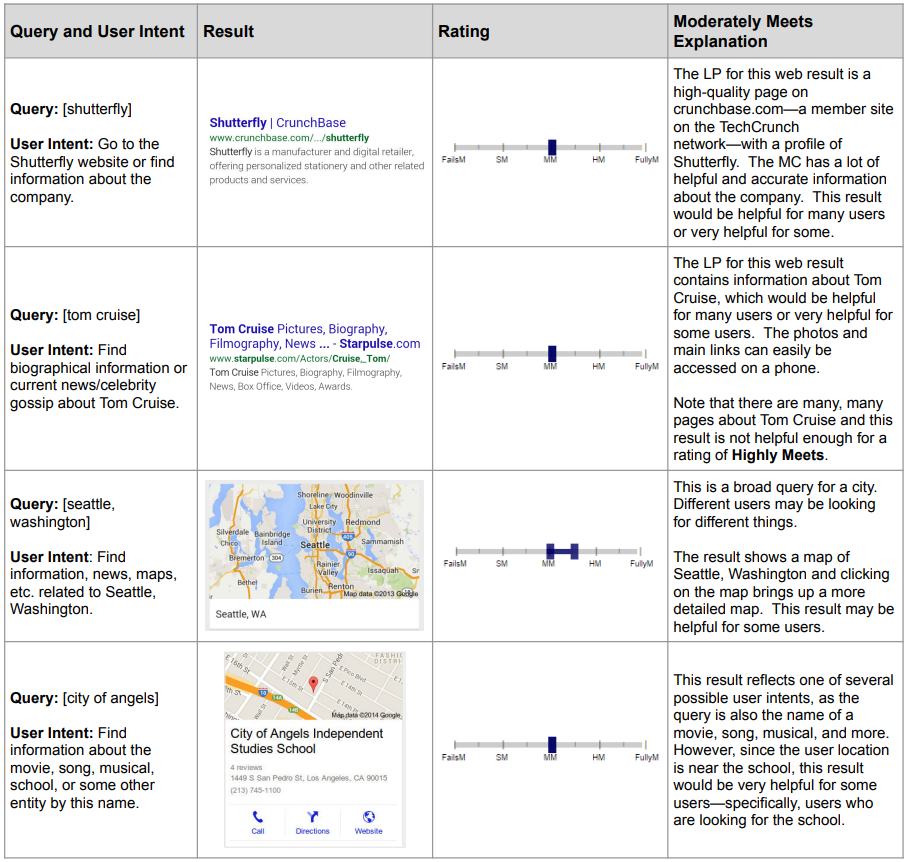
‘Slightly Meets’ examples
The examples below show situations where the search results only partially align with the user’s intent. This is evident from the less helpful results, which include outdated information and search results that may only be relevant to a small group of users. Most users searching for those queries would not be satisfied or have their needs met.
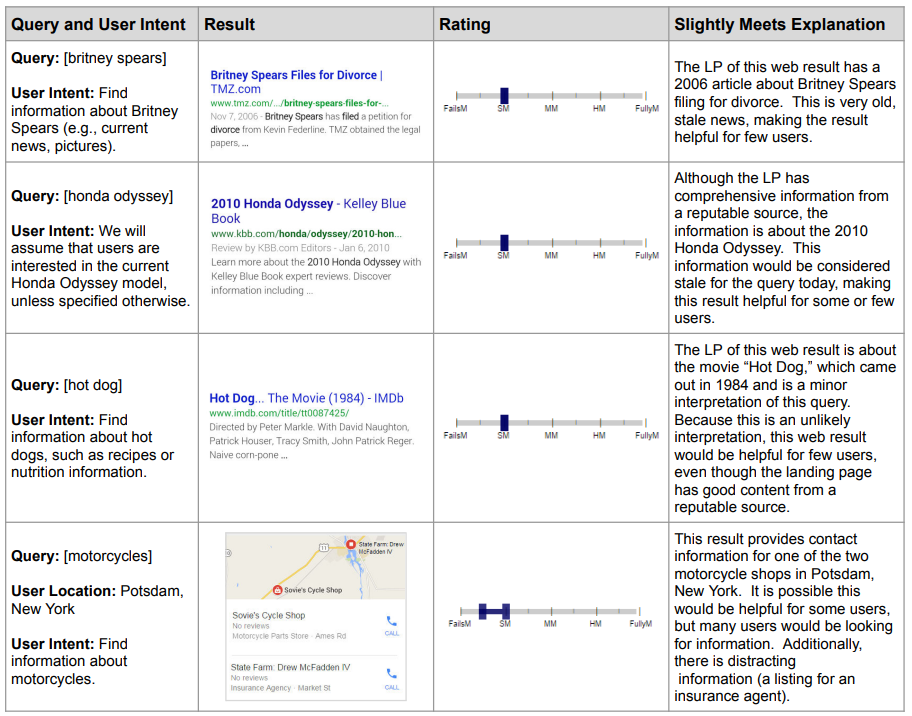
‘Fails to Meet’ examples
Below are some examples illustrating areas where the search results don’t meet the user’s intent. Here, the search results are not helpful in any way, and they don’t provide any relevant or valuable information to the user’s query. These search results are marked as ‘fails to meet’ during the assessment process. If the search results display entirely incorrect information, fake news, extremist or conspiracy theories, they are also marked as ‘fails to meet’.
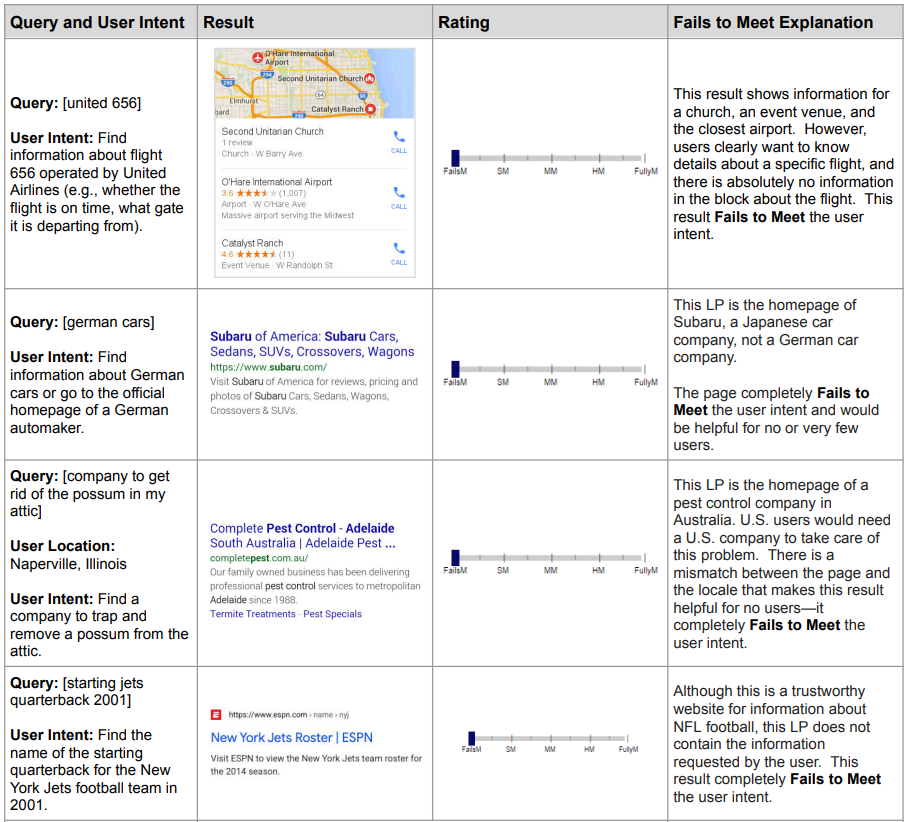
Empowering your business with ‘Needs Met’
SEO isn’t a dark art, but it does require a deep understanding of how Google’s ranking algorithms work. If you’re wondering why your website ranks for a specific keyword or not, employing the ‘Needs Met’ framework can help you identify how to create, structure and present content on your website effectively to address user intent.
Google’s ‘Needs Met’ framework demystifies the path to page-one rankings, enabling you to serve your audience with precision and purpose.
Looking for someone to demystify SEO and supercharge your website? Talk to our experienced team of experts today.

